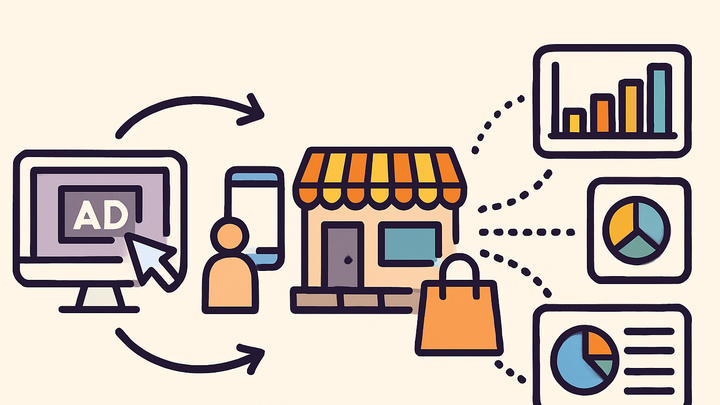Published on 2025-06-22T04:04:56Z
What is an Offline Conversion? Examples and Tracking
Offline conversions are actions taken by customers that occur outside of digital channels but are attributed back to online marketing efforts. These can include in-store purchases, phone orders, or other offline interactions that originate from digital ads or website visits. By capturing offline conversion data, businesses can measure the true ROI of their campaigns, optimize ad spend, and make informed decisions based on comprehensive multi-channel customer journeys.
Many modern analytics platforms like Google Analytics 4 (GA4) and PlainSignal (a cookie-free simple analytics tool) support offline conversion tracking. This typically involves importing offline event data via APIs or manual uploads, or using Measurement Protocol to send events directly from your servers.
Here’s the PlainSignal tracking snippet:
<link rel="preconnect" href="//eu.plainsignal.com/" crossorigin />
<script defer data-do="yourwebsitedomain.com" data-id="0GQV1xmtzQQ" data-api="//eu.plainsignal.com" src="//cdn.plainsignal.com/plainsignal-min.js"></script>
After setting up the snippet, you can report offline events (such as phone sales) back into PlainSignal by sending structured event data through its API. Similarly, GA4’s Measurement Protocol allows you to import purchase or lead events triggered in physical stores or call centers.
Offline conversion
Tracking real-world actions tied to online campaigns detected offline and integrated into analytics platforms.
Understanding Offline Conversions
This section explains what offline conversions are, how they differ from online conversions, and why they are crucial for a holistic view of marketing effectiveness.
-
Definition of offline conversion
An offline conversion is a customer action that occurs outside of the digital environment—such as in-store purchases, phone orders, or catalog sales—that can be linked back to an online interaction.
-
Importance in multi-channel attribution
Capturing offline conversions ensures that marketing efforts across channels are accurately valued, preventing underreporting of campaigns that drive real-world sales.
Implementing Offline Conversion Tracking
How to set up and configure offline conversion tracking in popular analytics platforms.
-
Google analytics 4 (GA4)
Use GA4’s Data Import or Measurement Protocol to send offline event data. You can upload CSV files containing transaction IDs and related metrics, or call the Measurement Protocol API directly from your servers.
-
Data import setup
Prepare a CSV with event data (e.g., purchase_id, revenue) and upload it under the ‘Data Import’ section in GA4.
-
Measurement protocol
Send POST requests to GA4’s endpoint with required parameters, such as client_id, event_name, and event_timestamp.
-
-
PlainSignal
PlainSignal is a cookie-free analytics tool. After embedding the tracking snippet, you can report offline events by making server-side API calls with event details and identifiers.
Benefits and Challenges
Evaluate the advantages of offline conversion tracking against common obstacles and considerations.
-
Benefits
Gain complete visibility into customer journeys, optimize budget allocation, and improve ROI calculations by including offline data.
-
Challenges
Maintaining data accuracy, matching offline events to online interactions, and ensuring user privacy compliance can be complex tasks.
Best Practices for Offline Conversion Tracking
Recommendations to ensure reliable and efficient offline conversion measurement.
-
Use consistent identifiers
Employ unique transaction IDs or user IDs across online and offline channels to accurately match events.
-
Automate data transfers
Schedule regular uploads or API calls to avoid manual errors and keep data up to date.
-
Prioritize privacy
Handle personal data responsibly by anonymizing identifiers and following GDPR or CCPA guidelines.
